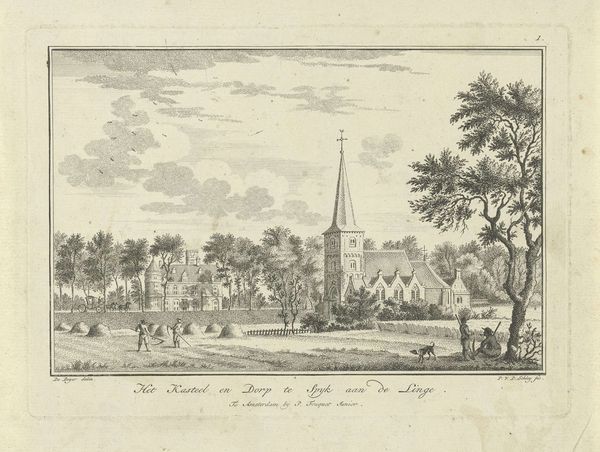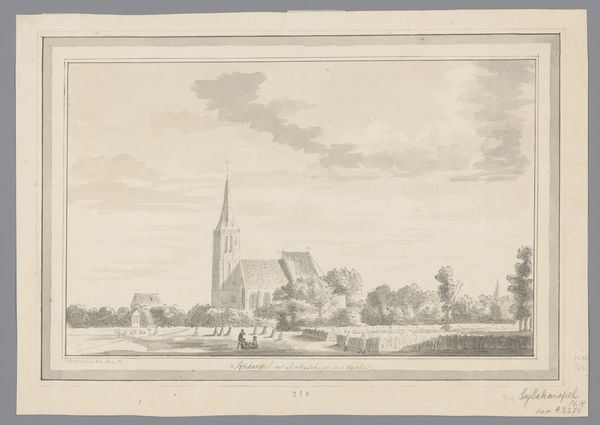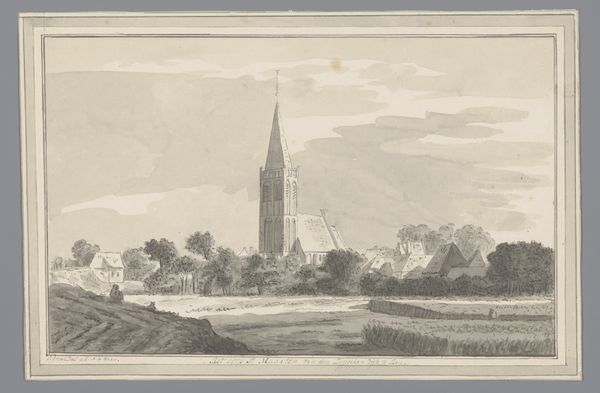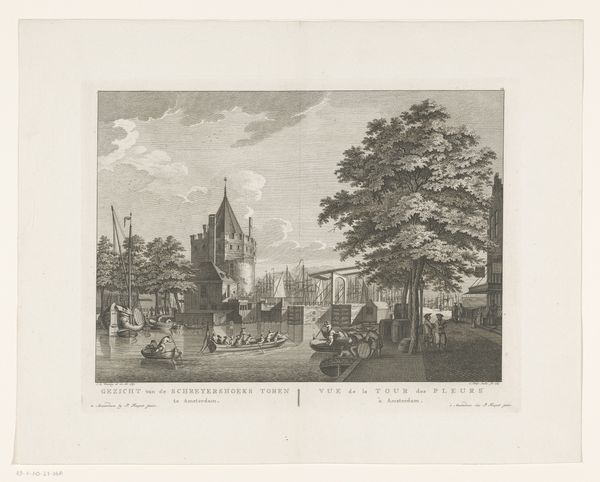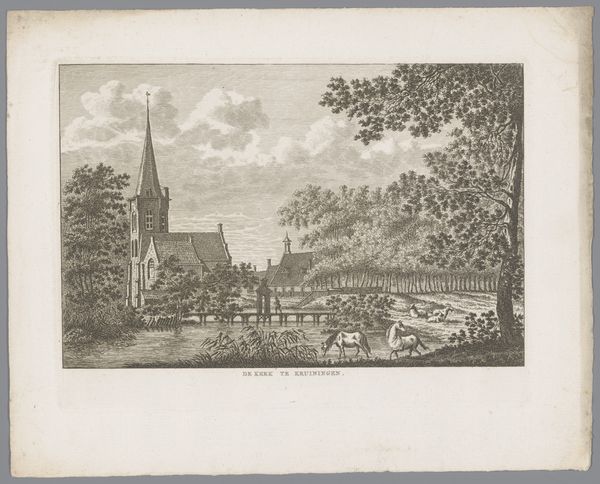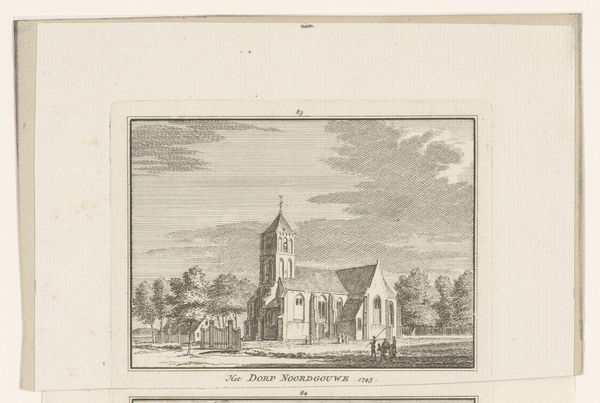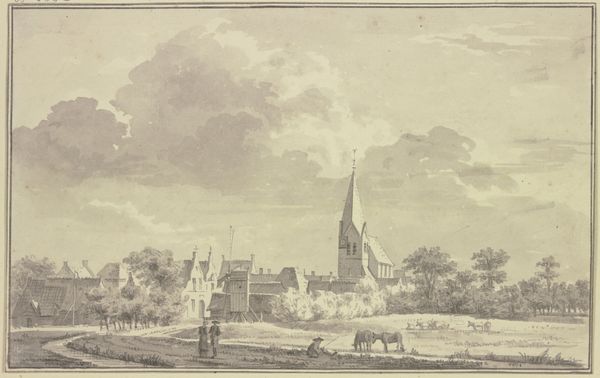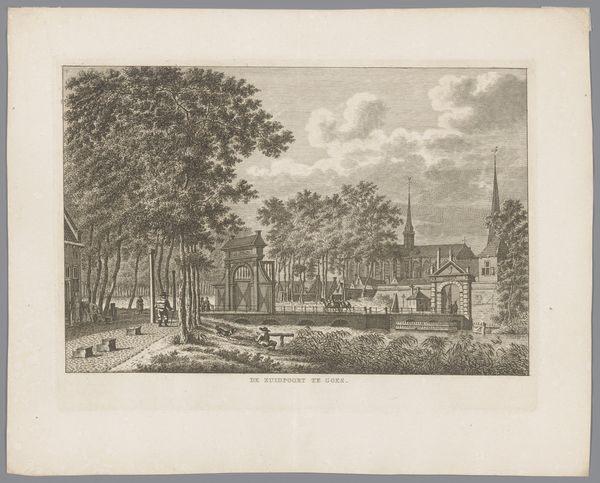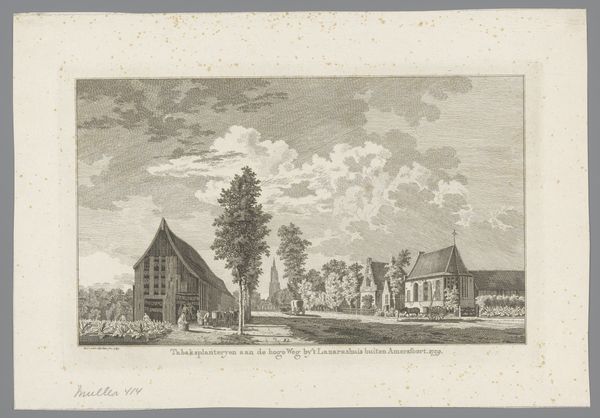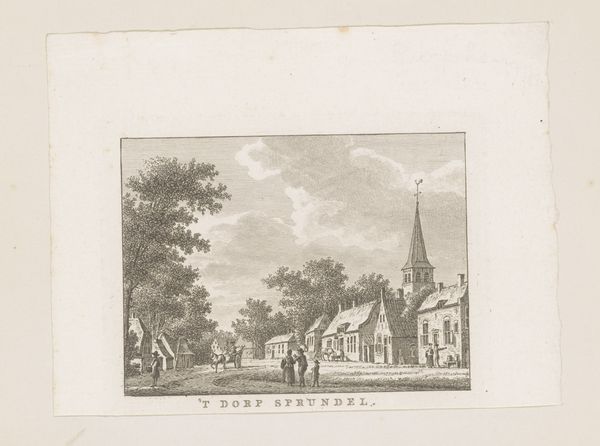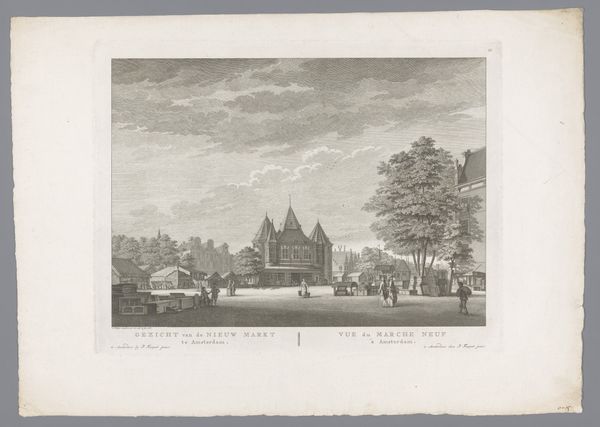
print, engraving
#
dutch-golden-age
# print
#
landscape
#
genre-painting
#
engraving
Dimensions: height 206 mm, width 502 mm
Copyright: Rijks Museum: Open Domain
Curator: This is Leendert Brasser’s “Dorpsgezicht in Oostkapelle,” created around 1781-1782. It's a detailed engraving offering a panorama of the village. Editor: Immediately, the crispness strikes me. The textures of the buildings, the delicate shading… it’s very controlled. Everything has a defined structure within its space. Curator: Precisely. Consider how Brasser employs linear perspective to construct depth, guiding the eye from the foreground figures towards the towering church spire. The church clearly dominates the scene as the vertical fulcrum. Editor: And that's where the interest lies for me. The spire isn't just an aesthetic choice; it's the physical and ideological heart of the community made permanent through the craft of engraving. It would have required skilled labor and expensive materials to create these prints and I wonder how widely they were disseminated and for what purpose? Curator: Well, this exemplifies Dutch Golden Age aesthetics. It’s rooted in realism and emphasizes moral simplicity. Note how the genre elements, the everyday life depicted in the foreground, are presented within a broader symbolic structure. It gives you this perfect balance, a kind of harmonious view of village life. Editor: That supposed balance raises questions about whose perspective we're seeing. What about the unglamorous work that supported the society being presented? The printing process itself, grinding inks, pressing, distribution – those elements remain invisible and outside of our viewing field. Curator: But without that controlled process and perfect construction of its different parts, we wouldn’t have the artwork itself. See how that steeple anchors our eyes upward toward something beyond just materiality! Editor: Perhaps it anchors the eye but simultaneously obscures the means through which the image has arrived, erasing, perhaps, any laboring hands and physical exertion from the view entirely? That would perhaps be the view toward some form of the sublime for the aspiring elite, no? Curator: Food for thought... I can see how it speaks to both a desire for a kind of rural stability, and the hands-on crafting of prints to secure a lasting image of a fleeting present. Editor: Ultimately, Brasser's detailed etching invites us to question what isn’t there in order to interpret fully its lasting appeal.
Comments
No comments
Be the first to comment and join the conversation on the ultimate creative platform.
